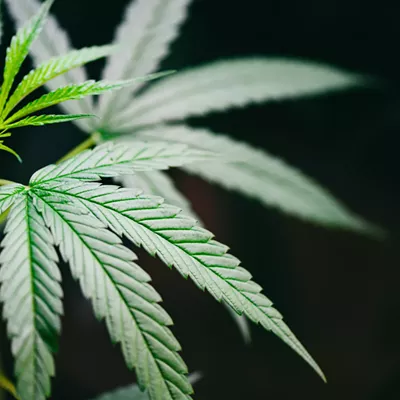A recent University of Arizona Health Sciences study found that cannabis terpenes reduce chronic neuropathic pain as much as morphine.
Previous studies have mostly focused on the exploration of the pain-relieving properties of tetrahydrocannabinol (THC), and cannabidiol (CBD). While effective for some, the effects of both cannabinoids can teeter a line of being too moderate in pain relief or delivering unwanted psychoactive effects.
Therefore, lead researcher, Dr. John Streicher, wanted to explore cannabis and its relationship to relief from chronic pain. This comes in the wake of the opioid epidemic.
Streicher — who is a member of the Comprehensive Center for Pain and Addiction, and a UA College of Medicine pharmacology professor — explored other methods of pain relief that do not trigger addiction or unwanted psychoactive effects.
Terpenes, which are naturally occurring aromatic compounds that contribute the flavor profile of a cannabis strain, have gained significant traction within the cannabis industry as scientists have pondered their medicinal benefits. For example, terpenes like caryophyllene, limonene and myrcene, are known for their anti-inflammatory and possible pain-relieving properties.
While terpenes occur in all plants, cannabis is abundant in them with around 150 known terpenes occurring across various cannabis strains. During the study, Streicher and his research team focused on five commonly occurring terpenes in cannabis: humulene, caryophyllene, pinene, linalool and geraniol.
Because opioids trigger the brain’s reward system and can lead to addiction, Streicher and his team analyzed reward liability of terpenes to determine risk of addiction, finding that terpenes do not activate the brain’s reward system and therefore are low risk for addiction.
“We looked at other aspects of the terpenes, such as: ‘Does this cause reward? Is this going to be addictive? Is it going to make you feel awful?'” Streicher said in a May 28 statement. “What we found was yes, terpenes do relieve pain, and they also have a pretty good side effect profile.”
During the study, Streicher and his team used a mouse model to replicate neuropathic pain induced by chemotherapy, a form of chronic pain triggered by damaged nerves due to chemotherapy medication.
Each terpene was then tested and compared with morphine. Researchers discovered that each of the five terpenes were adequate in reducing physical pain levels “near to or above the peak effect of morphine.” Even more striking, when researchers combined terpenes with morphine, the analgesic properties of all terpene and morphine combinations increased at a substantial amount.
“This brings up the idea that you could have a combination therapy, an opioid with a high level of terpene, that could actually make the pain relief better while blocking the addiction potential of opioids,” Streicher said. “That’s what we are looking at now.”
Streicher and the research team also analyzed different methods of terpene consumption: injection, oral dosing and inhalation of vaporized pure terpenes. The results showed that when terpenes are taken orally or inhaled, their effects considerably decreased; or in some cases, were even absent.
“A lot of people vape or smoke terpenes as part of cannabis extracts that are available commercially in states where cannabis use is legal,” Streicher said.
“We were surprised to find that the inhalation route didn’t have an impact in this study, because there are a lot of at least anecdotal reports saying that you can get the effects of terpenes whether taken orally or inhaled. Part of the confounding factor is that terpenes smell quite nice and it’s hard to disguise that aroma, so people could be kind of having the psychosomatic placebo-style effect.”
Because the study’s findings offer a novel glimpse into the side effects of terpenes, suggesting a deeper implication of the medicinal versatility of cannabis, Streicher hopes to apply these findings into future research.











